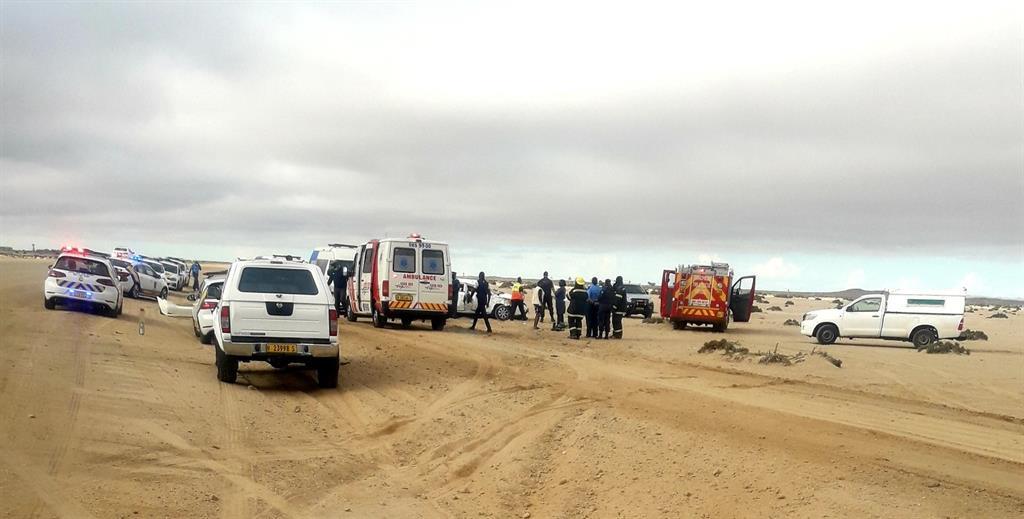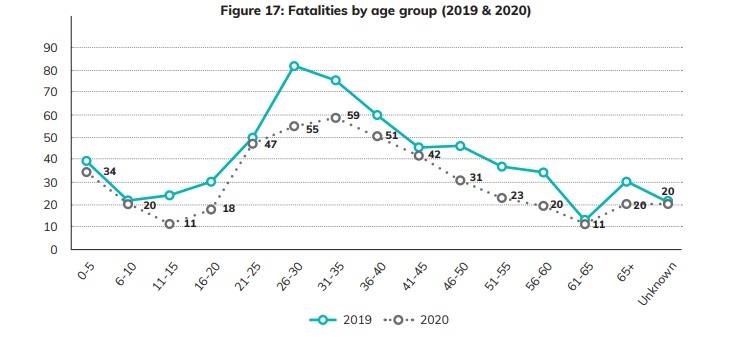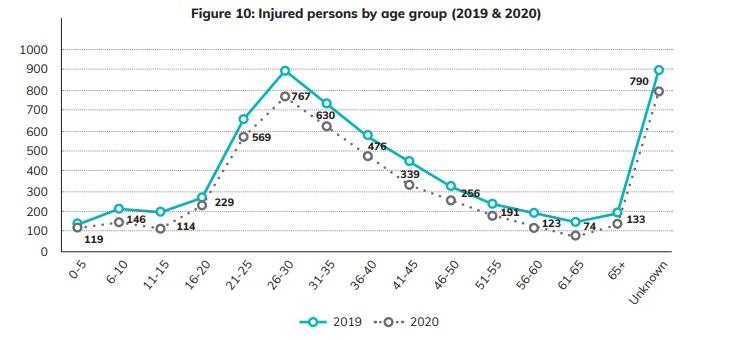Mitigating the risk of MVA’s
With the Motor Vehicle Accident Fund of Namibia reporting that a particular age demographic is most at risk of vehicle accidents and resulting fatalities, emergency rescuer Brian Low says that drivers need a wake-up call.
Iréne-Mari van der Walt
Despite the steady reduction in motor vehicle accidents since 2016, the 26 to 30-year age category still remains the age group most involved in car accidents in Namibia, according to the Motor Vehicle Accident (MVA) Fund of Namibia. And with the festive season around the corner, emergency rescue personnel are bracing for impact.
“As much as the festive season is supposed to be a happy time, in our profession we prepare for a tragic season,” says Brian Low of Lifelink Namibia, an emergency rescue service situated at the Namibian coast, ahead of the upcoming holiday season.
He believes that the greatest influence on car crash statistics in Namibia are driver attitudes. “It’s not the roads. It’s drivers driving drunk, tired or distracted and not dimming their lights. We see many drivers becoming impatient on our roads, especially after dark.”
Low alludes that drivers often have misperceptions about Namibian roads and car accidents. “People often want to say that we have bad roads, but on the contrary we have good roads. We often hear of drivers bragging about how they drove from Windhoek to the coast in incredibly short times. They are only able to do that because we have good, open roads that allow them to just put their foot down on the accelerator,” he says.
Road safety is about far more than a driver and the passenger in the vehicle they are driving. “People often want to say it wouldn’t happen to them and we also hear people saying if it’s ‘their time’, so be it, but it might not be your day, but somebody else’s. You could be killing somebody else’s child in an accident,” he says.
The age groups of 6-10 years and 26-30 years are also the two age groups most often involved in pedestrian car crashes, with the most fatalities from motor vehicle accidents claiming lives of the 26 – 30 year age category in 2019. This particular category fell second to the 31 – 35 year age category by only 5 death in 2020.
Low is of the opinion that change must start with drivers, but that the hands of our leadership are not exactly tied. “We need to put policing systems in place so that people will avoid irresponsible behavior even if it is just to avoid being fined, but more than that drivers need to take responsibility and drive safely. I think they should enjoy the holidays instead of ending it in tragedy,” Low says, an ex-policeman himself.
“I was a policeman and we did this so I am hopeful that our police will be visibly policing this festive season. There’s something about seeing blue lights that makes people think twice,” he says.
Despite the steady reduction in motor vehicle accidents since 2016, the 26 to 30-year age category still remains the age group most involved in car accidents in Namibia, according to the Motor Vehicle Accident (MVA) Fund of Namibia. And with the festive season around the corner, emergency rescue personnel are bracing for impact.
“As much as the festive season is supposed to be a happy time, in our profession we prepare for a tragic season,” says Brian Low of Lifelink Namibia, an emergency rescue service situated at the Namibian coast, ahead of the upcoming holiday season.
He believes that the greatest influence on car crash statistics in Namibia are driver attitudes. “It’s not the roads. It’s drivers driving drunk, tired or distracted and not dimming their lights. We see many drivers becoming impatient on our roads, especially after dark.”
Low alludes that drivers often have misperceptions about Namibian roads and car accidents. “People often want to say that we have bad roads, but on the contrary we have good roads. We often hear of drivers bragging about how they drove from Windhoek to the coast in incredibly short times. They are only able to do that because we have good, open roads that allow them to just put their foot down on the accelerator,” he says.
Road safety is about far more than a driver and the passenger in the vehicle they are driving. “People often want to say it wouldn’t happen to them and we also hear people saying if it’s ‘their time’, so be it, but it might not be your day, but somebody else’s. You could be killing somebody else’s child in an accident,” he says.
The age groups of 6-10 years and 26-30 years are also the two age groups most often involved in pedestrian car crashes, with the most fatalities from motor vehicle accidents claiming lives of the 26 – 30 year age category in 2019. This particular category fell second to the 31 – 35 year age category by only 5 death in 2020.
Low is of the opinion that change must start with drivers, but that the hands of our leadership are not exactly tied. “We need to put policing systems in place so that people will avoid irresponsible behavior even if it is just to avoid being fined, but more than that drivers need to take responsibility and drive safely. I think they should enjoy the holidays instead of ending it in tragedy,” Low says, an ex-policeman himself.
“I was a policeman and we did this so I am hopeful that our police will be visibly policing this festive season. There’s something about seeing blue lights that makes people think twice,” he says.










Comments
Namibian Sun
No comments have been left on this article